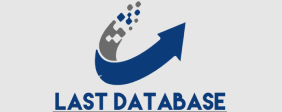Email databases are more than just contact lists—they are strategic tools that can help businesses understand and manage customer relationships throughout their entire journey. By effectively using an email database, you can track the user life cycle from the moment a lead subscribes to your list to when they become a loyal customer—or even re-engage lapsed users.
What Is the User Life Cycle?
The user life cycle refers to the stages a customer goes through in their interaction with a brand. These typically include:
-
Awareness: The user learns about your brand.
-
Consideration: They show interest or engage with content.
-
Conversion: The user becomes a customer.
-
Retention: They continue job function email database interacting with or purchasing from your business.
-
Re-engagement or Churn: They may stop engaging—or you try to bring them back.
Understanding where a user is in this cycle helps you send more relevant, personalized emails.
How Email Databases Support Life Cycle Tracking
Collecting Key Data at Every Stage
Email databases store more than just email addresses—they can capture user behavior, preferences, interactions, and purchase history. This information helps you identify which stage of the life cycle each user is in.
For example:
-
A new subscriber who hasn’t purchased anything is likely in the awareness or consideration stage.
-
A user who clicks product links or reads multiple blog posts is moving toward conversion.
-
Someone who hasn’t opened emails in 90 days may be in the churn phase.
Segmentation and Personalization
Using your email database, you can segment users based on their life cycle stage. This allows for:
-
Welcome emails for new subscribers
-
Product recommendations for those close to converting
-
Loyalty rewards or upsell offers for returning customers
-
Win-back campaigns for inactive users
The more personalized and timely how to get email leads from industry portals your messages, the more likely users will engage and progress to the next stage.
Automation and Triggered Emails
Modern email marketing platforms allow you to automate emails based on database activity. For instance:
-
When a user signs up → trigger a welcome series
-
After a purchase → send a thank-you and related product suggestions
-
If inactive for 30 days → launch a re-engagement campaign
These triggered communications help keep users moving along the life cycle efficiently.
Benefits of Tracking User Life Cycles with Email Databases
Increased Engagement and Conversion Rates
Relevant emails drive higher open and click-through rates because they match the user’s needs and interests at the right time.
Better Customer Retention
Tailored retention emails like loyalty rewards, canada cell numbers exclusive offers, or helpful tips keep users engaged post-purchase.
Reduced Churn and More Opportunities for Re-engagement
Understanding why users disengage allows you to act proactively, sending reminders, surveys, or incentives to bring them back.
Conclusion
Email databases are powerful tools for tracking and managing user life cycles. By collecting behavioral data, segmenting your audience, and sending timely, personalized content, you can nurture leads, retain customers, and maximize the value of each user relationship. Start using your email database strategically, and you’ll not only improve your marketing performance but also deliver a better experience for your audience.

